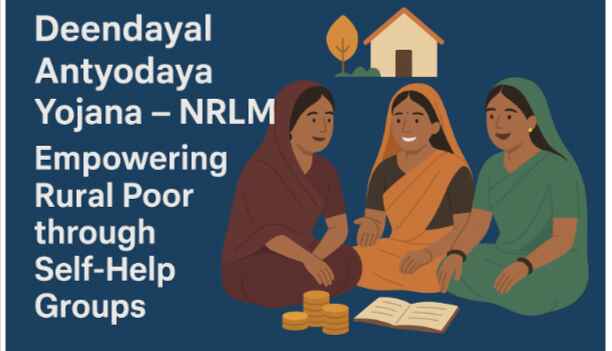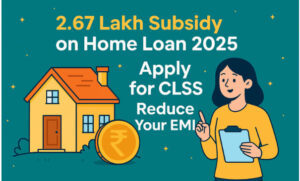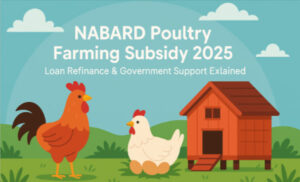Deendayal Antyodaya Yojana – National Rural Livelihoods Mission (DAY-NRLM) is the flagship rural poverty alleviation program by the Ministry of Rural Development (MoRD), Government of India. It focuses on empowering rural poor, especially women, by organizing them into Self Help Groups (SHGs) and enabling access to livelihoods, skills training, credit, and public services.
Launched by restructuring the Swarnajayanti Gram Swarozgar Yojana (SGSY) and renamed as DAY-NRLM from March 29, 2016, the mission works across 600+ districts, aiming to cover 7 crore rural poor households.
Key Highlights of DAY-NRLM Scheme
• Scheme Name: Deendayal Antyodaya Yojana – National Rural Livelihoods Mission (DAY-NRLM)
• Launched By: Ministry of Rural Development, Government of India
• Coverage: 7 crore households, 600 districts, 2.5 lakh Gram Panchayats
• Target Group: Rural poor households, especially women
• Focus Areas: SHGs, financial inclusion, skill development, livelihood promotion
• Application Mode: Online through https://aajeevika.gov.in Portal
Benefits of the Program
• One member (preferably a woman) from each rural poor household is brought under the SHG network
• Formation and strengthening of women-led SHGs with access to bank credit
• SHGs federated at village and higher levels to promote self-reliance and collective empowerment
• Four key components:
– Social mobilization, capacity building
– Financial inclusion
– Livelihood promotion
– Convergence with various departments
• Special focus on vulnerable groups (disabled, landless, women-headed families, etc.) through participatory social assessment
• Training in livelihood skills, institutional management, and credit absorption
• Rural Self Employment Training Institutes (RSETIs) for skill development and placements
• Provision of Revolving Fund to SHGs for credit history building
• Community Investment Fund (CIF) support for collective activities in intensive blocks
• Interest subvention on SHG loans to bring down the effective interest rate to 7%
• States have flexibility to develop customized poverty reduction action plans
• Active support for financial literacy, market linkages, and risk coverage
• Linkages with District Rural Development Agencies (DRDAs) and Panchayati Raj Institutions (PRIs)
Eligibility Criteria
• SHGs must be in active existence for at least 6 months as per their accounts
• SHGs should follow Panchasutras:
– Regular meetings
– Regular savings
– Regular inter-loaning
– Timely repayment
– Up-to-date record keeping
• SHGs should meet grading norms set by NABARD or their federations
• Revived defunct SHGs that remain active for 3 months are also eligible
How to Apply – Online Process
To register for DAY-NRLM;
-
Visit the official NRLM Registration Portal
-
Fill in the mandatory details – Name, Email ID, Contact Number
-
Choose a Username and create a password
-
Click on “Create New Account”
-
After successful registration, proceed to apply for relevant schemes and training support via the portal
Necessary Documents for Application
• Aadhaar Card
• Proof of Identity (PAN/Voter ID)
• Proof of Residence
• Voter ID Card
• Passport-size photograph
Frequently Asked Questions (FAQs)
Q: What is DAY-NRLM or Aajeevika?
A: It is a government initiative to reduce rural poverty by promoting gainful self-employment and wage employment through SHGs.
Q: How is NRLM different from SGSY?
A: NRLM is a mission-mode, demand-driven program with decentralized planning, unlike the centrally allocated SGSY scheme.
Q: Who can benefit from NRLM?
A: Rural poor, especially women, organized into SHGs, including revived SHGs, and youth seeking skill development.
Q: Is NRLM only for women?
A: No, but the primary focus is on women-led SHGs. Male members and youth can benefit through skill development components.
Q: What are SHGs and their role under NRLM?
A: Self Help Groups (SHGs) are small groups of rural poor, mostly women, formed for savings and credit access, livelihood promotion, and capacity building.
Q: What is the ‘Panchasutra’?
A: Five principles every SHG must follow: regular meetings, savings, inter-loaning, timely repayment, and up-to-date records.
Q: What is the Revolving Fund in NRLM?
A: It is financial assistance given to SHGs to strengthen credit practices and build a good bank linkage history.
Q: How are SHGs graded?
A: Based on performance indicators defined by NABARD or their respective federations.
Q: What is the Interest Subvention benefit?
A: It reduces the effective interest rate on SHG loans to 7% by covering the difference between the bank rate and this threshold.
Q: What are RSETIs?
A: Rural Self Employment Training Institutes that provide skill development, training, and placement support to rural youth.
Q: What is the Aajeevika Skills Development Programme (ASDP)?
A: A sub-component of NRLM offering training and self-employment opportunities to rural youth.
Q: Can states design their own NRLM plans?
A: Yes, states can create customized action plans based on local needs and poverty indicators.



